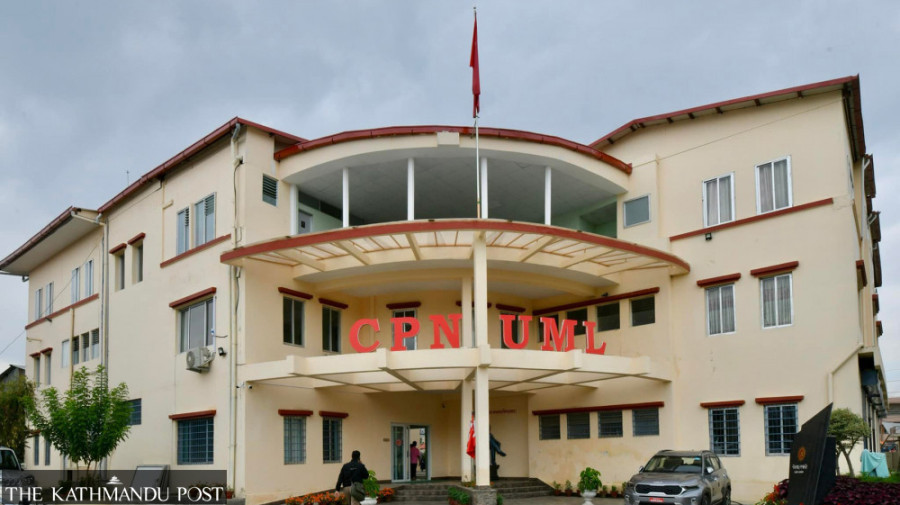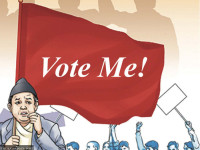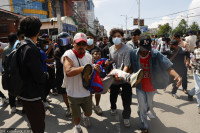Editorial
Mission improbable
CPN-UML’s goal of securing 150 of the 275 lower house seats in 2027 appears to be a tall order.
Among Nepal’s three big political forces, the CPN-UML has easily the most robust nationwide organisation as well as the most dedicated cadre-base. The party has a functional chain of command, its office-bearers regularly meet to hammer out vital issues, and the carefully choreographed UML general conventions and party events are the envy of its rivals. This organisation heft has over the years made the UML a potent electoral force. Yet, with time, big chinks are emerging in its organisational armoury.
Perhaps the party’s biggest failure is to groom the next generation of leaders who are clean and competent in the public eye. This is a trait it shares, to an extent, with the Nepali Congress and the CPN (Maoist Centre), the other two big parties. Particularly after the Supreme Court-mediated split of the Nepal Communist Party in March 2021—whereby other senior leaders like Pushpa Kamal Dahal, Jhalanath Khanal and Madhav Kumar Nepal broke away—the UML has become a KP Oli show. His failure to give the party a new direction and inspire the public became clear in the 2022 general elections when the party was confined to 77 lower house seats from its tally of 121 in the 2017 polls. Shaken by the electoral drubbing, the party embarked on a "Mission Grassroots" campaign to explore ways to get its parliamentary majority back in the 2027 national elections. Again, easier said. As the footsoldiers of the campaign discovered, the youths seem to be losing interest in the party. It thus aims to “vigorously recruit” them in the next few years; how, it is still unclear. Another of the party’s goals is to revitalise its local level committees.
With these efforts, the party aims to win 150 of the 275 seats in the next federal elections. That appears to be a tall order. For one, a strong organisation can only do so much. The reason the youths—as well as the larger electorate—are flocking to newer outfits like the Rastriya Swatantra Party and the Janamat Party is that they no longer trust the established ones. They see that these parties are mostly ruled by the leaders who have been repeatedly tested and found wanting and yet refuse to bow out of politics gracefully. The best way to attract the youth would be to force a generational shift at the top of the party hierarchy. But given the way the UML’s party machinery is currently dominated by elderly leaders, that will be mighty difficult to do before 2027.
The UML says, come 2027, it will bring back the votes it lost to the Congress and the Maoist Centre in 2022. That too is doubtful. What if the voters are not in a mood to support any of these parties and choose a new force, as many of them did in the recent by-elections? What the ageing leaderships of the UML and other established parties don’t seem to realise is that people will no more be fooled by cosmetic changes. What they want is a radical overhaul of the patronage-based, corrupt political system that gradually came into being starting with the 1990 political changes.




 8.12°C Kathmandu
8.12°C Kathmandu














